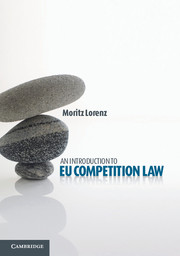Book contents
5 - Merger control
Published online by Cambridge University Press: 05 May 2013
Summary
Introduction
Merger control is the third pillar of EU competition law. At EU level the Commission plays the central role in the control of concentrations. Subject to judicial review by the General Court and the ECJ the Commission decides whether a merger notified by the interested parties may be implemented. In most jurisdictions, including the EU, merger control is designed as an ex ante control which shall primarily prevent merging undertakings from reinforcing or establishing a dominant position enabling them to exercise market power that could be harmful for the process of undisturbed competition.
The purpose of merger control
The main aim of merger control is to prevent mergers leading to the creation or reinforcement of a dominant position and thus depriving consumers of benefits resulting from effective competition such as low prices, high-quality products, wide selection of goods and services, and innovation. Mergers may impede effective competition by altering the market structure in such a way that companies on a relevant market are more likely to coordinate and raise their prices. Another detrimental effect to competition may be a reduction of the companies’ abilities and/or incentives to compete which may result in higher prices or a lack of innovation. Therefore the most important goal of merger policy is to avoid the creation of a market structure that would significantly facilitate coordination of market behaviour between different market players. Contrary to the ex post control of abusive market practices by dominant undertakings under Article 102 TFEU, EU merger control is designed to preclude undertakings from creating a dominant position which might in future enable them to abuse their market power to the detriment of consumers.
Information
- Type
- Chapter
- Information
- An Introduction to EU Competition Law , pp. 242 - 308Publisher: Cambridge University PressPrint publication year: 2013
